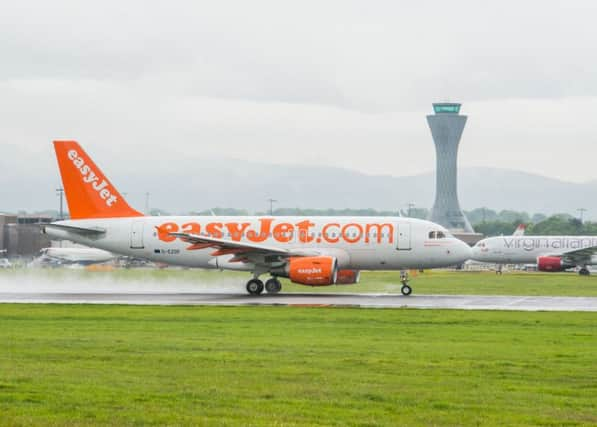Edinburgh easyJet plane suffered hard landing after computer failure


The plane, an Airbus A319-111 with 139 passengers and six crew on board, sustained damage to its nose and right main landing gear in the incident at Munich Airport on July 3, 2017.
An Air Accidents Investigation Branch report said the crew had been “distracted” after the commander’s Flight Management Guidance Computer failed and the plane’s twin turbofan engines began “to spool up un-commanded”.
Advertisement
Hide AdAdvertisement
Hide AdThe co-pilot, who was flying, disconnected the autopilot and autothrust, and the rest of the approach was flown manually.
As the aircraft approached the touchdown point, the co-pilot selected a lower-than-normal pitch attitude and with a warning shout of “watch it” from the 41-year-old captain coming too late to make any difference, the aircraft touched down “firmly”. No-one was injured and the crew taxied the aircraft to the stand as normal but a load report was printed automatically, indicating the aircraft had suffered a hard landing
According to the AAIB report, the commander was initially dealing with the failure of the Flight Management Guidance Computer and a cabin pressure landing elevation fault and, from his perspective, the aircraft was on a normal and stable approach.
The AAIB said: “He did not notice any nose-down control inputs because he was concentrating on the runway and touchdown point. Approximately 0.5 seconds before touchdown, the commander called out ‘watch it’, as he detected the aircraft was not in the usual attitude for landing, but the aircraft had touched down before he had time to react in any way which might have altered the outcome.”
The aircraft was inspected for a Severe Hard Landing as required by the manufacturer’s Aircraft Maintenance Manual. This inspection revealed damage to the nose landing gear and the right main landing gear as well as some cracking of the paint and sealant in the nose gear bay and avionics bay. The inspection showed there was no other damage to the aircraft.
On the advice of the manufacturer, all three landing gears on the aircraft were replaced and sent for detailed inspection.
The AAIB report concluded: “Following an approach during which a Flight Management Guidance Computer failed, neither pilot realised that the aircraft was in the incorrect attitude for landing until it was too late to take corrective action.
“As a result, the aircraft landed heavily causing damage to the nose and right main landing gear. It is possible that distractions and high workload during the approach contributed to the nose-down pitch input being made immediately before touchdown.”
The AAIB report does not discuss the reasons for the apparent failure of the Flight Management Guidance Computer on the plane.
